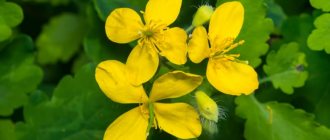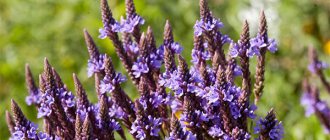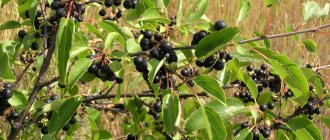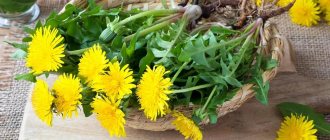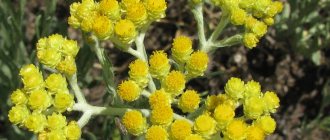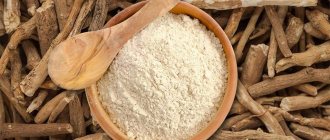Its other names: Golden grass, Yellow grass, Cleansing grass, Devil's milk, Chistukha, Swallow grass, Witch's grass, Warthog, Wart grass, Bloodworm, Yellow spurge, Cow's grass, Chistoplod, Dog soap, Gladishnik, Chistoplod.
The Latin name of the genus comes from the Greek word “swallow”. From early times it was noticed that the plant blooms with the first arrival of swallows and withers when they fly away.
The juice of this plant is used to treat skin lesions, as well as remove warts.
Celandine is a perennial herbaceous plant of the poppy family.
The root is branched, taprooted, with a multi-headed short rhizome. The root is yellow inside, brownish-red outside.
The stem is hollow, erect, branched, ribbed, covered with inconspicuous hairs, up to 100 cm high.
The leaves below are bluish, green, pinnately divided, with distinct pairs of leaflets. Leaves are dissected into lobed-crenate lobes. The length of the leaves is up to 20 cm, the width reaches 9 cm. The upper leaves are sessile, but the lower ones are on long petioles.
The flowers are yellow and bright on long stalks, collected in umbels at the ends of the stem, almost 20 mm in diameter. The calyx consists of a pair of sepals that fall off when the flower opens. The corolla is regular, the petals are rounded. Pistil with a thin short style and a two-lobed small stigma.
The fruit is a pod-shaped, single-locular, bivalve capsule 5 cm long and 3 mm wide. The seeds are dark brown, ovoid, shiny, with a comb-like pale appendage, arranged in two rows in a capsule.
Celandine blooms all summer, four months, May - August, the fruits ripen in July-September, it all depends on the zone where they grow.
Distribution and habitats of celandine
Celandine is widespread throughout the countries of the former Soviet Union, and is less common in Central Asia.
In the south of Ukraine it can be found in small groups or sparse thickets. Distributed along the banks of the Dnieper in the Zaporozhye and Kherson regions, as well as in the south of the Donetsk region. Often found in Crimea. A small amount of celandine grows in the foothills and steppe zone.
Celandine grows in soils rich in humus. Inhabits coniferous, larch-birch, broad-leaved and fir-spruce forests; found near rivers in the steppe region. In the mountains it grows almost to the upper limit of forest growth. Grows on shady rocky rocks, screes, slopes and along the banks of streams in river valleys, in bushes in sparse forests, along roads, often colonizes burnt areas and clearings, settles near housing, in gardens, wastelands, vegetable gardens, pastures and as a weed plant .
Propagated exclusively by seeds. Celandine juice has an unpleasant odor, usually pungent and bitter.
Active substances that celandine contains: protopine, berberine, chelidonine, coptisine, homochelidonine, stylopine, sanguinarine, chelerythrine, sparteine, saponins, ascorbic acid, flavonoids, vitamin A, citric acid, malic acid, succinic acid, coumaric chelidonic acid.
The plant is harvested during its flowering period, dried in the shade, in attics, under a canopy or in dryers.
It is recommended to store raw materials in boxes or paper bags in a dry, cool and well-ventilated area. The shelf life of celandine raw materials is three years.
Growing celandine
Due to the fact that water infusion can combat diseases and pests of the orchard, it is grown in gardens and vegetable gardens, at dachas. Having such a plant on hand is very useful both for the body and for the garden. Before planting, prepare the soil in the same way as for other medicinal crops. The area should be protected from direct sunlight and slightly damp. Seeds are sown superficially in early spring or before winter. Seeds lose their life at temperatures below 30 °C. The width between the rows should be about 50 cm. Lightly sprinkle the sown seeds with soil. With the first shoots, you need to carefully weed, water and loosen the soil.
Collect celandine carefully. Cut the plant down to the very root and spread it out in a fine layer. Dry, stirring constantly.
This herb is also found in various folk proverbs: “Golden grass is the head of all herbs,” “Poison can become nectar, and nectar can become poison.”
What is celandine
Celandine is a perennial herbaceous plant belonging to the poppy family. Widely distributed in the temperate climate of Eurasia. Typically grows throughout Europe with the exception of northern Scandinavia and Iceland. This plant can also be seen in the Canary Islands, Madeira, Morocco, northern Algeria, New Zealand and North America. The southern border of the celandine's range passes through Turkey, Iran, Kazakhstan and southern China. And the easternmost point where this grass grows is called the Japanese islands. As a rule, it grows along roads, on the outskirts of damp forests, especially beech and hornbeam. Often found in gardens and parks. Celandine loves fertile soil enriched with humus. And around the 16th century in Europe, celandine was grown as an ornamental plant.
Content:
- What is celandine
- Chemical composition and beneficial properties
- Benefits for the body
- Use in folk medicine
- Use in cosmetology
- How to prepare correctly
- Daily norm and dosage
- Contraindications
- How else can you use it?
This is a small plant, it rarely grows higher than 75 cm. Its light green leaves are divided into 5-7 oval-shaped segments. The underside is slightly fuzzy. The first yellow flowers (up to 2 cm in diameter) appear on the bushes in the spring and do not disappear until the beginning of autumn. When the grass fades, narrow elongated “capsules” with black shiny seeds are visible on it. In places where the stem is damaged, orange-yellow juice oozes, which is both poison and medicine. It is because of this juice that the plant is popularly called yellow milkweed, yellow milkweed, and devil's milk. Although other names are also known, for example, swallow grass (appears at about the same time when swallows arrive, and the Latin name translates as “swallow”), warthog (removes warts), cape grass (grows near fences), nutcracker (ripe seed pods snap) or cleansing herb (cleanses the skin of lichen).
Interestingly, in ancient times, celandine was considered a magical plant. In Rus', for example, they believed that this herb accumulated the power of fire and protected from evil. It was customary to carry the leaves of this plant with you, wrapped in burlap, for good luck and to protect against unfair accusations.
Botanical description
Greater celandine is a perennial herbaceous plant with a tap root, light brown in color.
The stem is 30-90 cm high, erect, with sparse long hairs, branched in the upper part. The leaves are alternate, large, green above, bluish below, soft, deeply pinnately dissected into segments. The stem, branches and leaves are very brittle; when broken, they release a thick golden-orange juice with an unpleasant odor.
The flowers are bright yellow, on long stalks, collected at the ends of the stem in umbrella-shaped inflorescences. Petals are 8-9 mm long. The fruit is an elongated, pod-shaped, erect, bivalve capsule, up to 5 cm long and 2-3 mm wide. Each fruit contains about 30 seeds. The seeds are black or dark olive in color
Great celandine grows in almost all European countries. In Russia it is found in the European part - Crimea, Western and Eastern Siberia, the Caucasus. Partially found in the Far East
For successful growth and reproduction, it prefers small sparse forests, with loose and rich soil, and therefore is firmly established in village gardens and vegetable gardens. Greater celandine can often be found in urban wastelands, as well as along destroyed building facades
The flowering period begins in May and continues until mid-summer. Fruit ripening period from July to September
Celandine reproduces both by seeds and vegetatively. It can produce about 1000 seeds at a time. Seeds are carried by the wind, as well as along with the soil that sticks to shoes, agricultural tools, animal hooves, etc.
Chemical composition and beneficial properties
Celandine juice contains a large number of alkaloids (almost 20 types). Their concentration in leaves and stems ranges from 0.5 to 1.5%, but the maximum amount of these substances is in the roots (up to 3-4%). In addition, celandine juice is rich in carotenes, ascorbic acid, essential oils, organic acids, tannins, phenolic compounds, flavonoids, choline, lectins, glycogen, pectin, various enzymes and other useful chemical compounds.
Most of the medicinal properties of celandine are determined by the alkaloids contained in the plant. One of the most powerful effects of celandine is relaxation of smooth muscles. That is, the plant extract affects the gastrointestinal tract, gall bladder, ureter, uterus, promoting the outflow of bile and active excretion of urine, eliminating constipation and menstrual pain.
Chelerythrine and sanguinarine contained in the stems have antiviral and bactericidal activity (including useful for getting rid of staphylococci and streptococci). And chelidonine acts on the nervous system like morphine, but does not cause euphoria (only anesthetizes).
The juice also contains a substance that blocks the proliferation of the papilloma virus and prevents the growth of warts.
In addition, the alkaloids contained in the plant are useful for protecting against viruses, have antitumor activity, antimicrobial, analgesic, sedative, diuretic, and anti-inflammatory properties.
Benefits for the body
Today, celandine is used mainly to treat the liver, spleen, gall bladder, kidneys, intestines, and some lung diseases. In addition, homeopathic preparations based on this herb are prescribed to people for gallstone disease and hepatitis. Next we’ll talk about the most famous and best studied properties of the plant.
Protection for the liver and gallbladder
Celandine contains substances that help cleanse the liver. This plant is useful for detoxifying the body. It has natural protective properties that not only help maintain proper liver health and performance, but also protect cells from damage. Celandine extract reduces inflammatory processes in the organ, it is useful for treating fibrosis and preventing toxic hepatitis. Celandine stimulates the functioning of the gallbladder, the dysfunction of which is known to cause various diseases, including indigestion. Clinical studies have confirmed the effectiveness of the herb for treating gallbladder inflammation. But before starting herbal medicine, it is important to consult a doctor.
Improves digestion
Celandine is useful to take for disorders of the digestive system. This herb relieves abdominal cramps, bloating, and alleviates indigestion. It helps the body produce more bile and other digestive enzymes responsible for efficiently digesting food. Some studies indicate that celandine extract is useful for treating stomach ulcers, irritable bowel syndrome and some chronic gastrointestinal diseases.
Treats eczema
The juice of the plant is traditionally used to treat many skin diseases, including atopic dermatitis. In 2011, scientists conducted an experiment, the result of which indicated that celandine juice is useful for treating eczema. This experiment was conducted on rats, but still proved the plant's ability to reduce the symptoms of eczema, including inflammation and itching.
Tinctures of celandine have been used for centuries to treat many skin conditions, including ringworm, calluses and warts.
Antimicrobial agent
Celandine is effective against diseases of the gums and teeth caused by bacteria. Laboratory experiments have shown that the plant extract has powerful antibacterial activity against several strains of bacteria, including streptococci. Researchers suggest that the antimicrobial abilities of celandine are associated with the substance chelerythrine contained in the plant. Other studies have confirmed the herb's effectiveness against the herpes simplex virus.
Anticancer agent
Celandine has anti-cancer properties. At one time, a study was conducted with the participation of patients with different types of cancer. Each participant in the experiment received a certain portion of celandine extract. It turned out that under the influence of the herbal medicine, the proliferation of cancer cells slows down and the survival rate of patients with cancer increases. Although, to be fair, it is worth noting that not all researchers agree that celandine is really so effective for treating cancer. At one time, the drug “Ukrain” for the treatment of cancer was made from celandine extract. But later, many researchers doubted its effectiveness, and in many countries this medicine was completely banned due to its dangers. But on the other hand, no one can deny that celandine contains substances that have antioxidant activity, which is also a protective factor against cancer.
Removes warts
Modern science has confirmed that celandine juice is an effective medicine against warts and papillomas. But these plant abilities have been known to man for more than a century. In ancient times, people knew that if you regularly apply orange celandine juice to a wart, sooner or later it will disappear. Today, many scientists confirm the effectiveness of such a folk remedy, but at the same time remind: you should not apply the herb juice to healthy areas of the skin (burns are possible).
For this treatment, you should break a branch of a fresh plant and wait until a drop of juice appears, then apply it to the wart. If it is not possible to obtain fresh celandine juice every day, you can prepare medicinal vinegar. To do this, pour 10 g of fresh plant with a glass of vinegar and leave for a month in a glass container (keep in a dark place, shake the jar with the contents every 3 days). The resulting product is useful for moistening warts.
Other benefits of celandine
- antifungal agent;
- relieves spasms;
- treats arthritis and gout;
- treats diseases of the genitourinary system;
- has analgesic properties;
- reduces blood pressure;
- useful for tuberculosis.
Use of a medicinal plant
The list of diseases that celandine treats is very diverse. It is considered a herb for almost all diseases, and its use is not limited by medical warnings or toxicity. But you should not forget about the toxicity of celandine. If it is possible to use a less dangerous alternative for treatment, then it is better to opt for it. But for some ailments, celandine is considered the most effective and preferable than other remedies. These include:
- Gallbladder and liver pathologies. The herb contains cholelitin, which produces the secretion of bile juice and reduces its viscosity.
- Skin pathologies. The juice burns warts, treats extensive calluses and long-term non-healing wounds. The juice is also effective for incipient lupus. When using celandine externally, official medicine does not make any restrictions.
- Polypous growths. An aqueous infusion of celandine is effective in the treatment of intestinal polyps, as well as growths in the nasal cavity, accompanied by sinusitis. Celandine helps to cope with polyps in the gynecological area. The product has a cauterizing effect on the growth, as a result of which it collapses and dies.
When treating, it should be taken into account that internal use of celandine has a lot of contraindications.
The juice cannot be taken in its pure form; it is included in various recipes, using it as a basis for medicines.
Fresh juice for external use
Juice from the celandine herb is used in the treatment of many skin pathologies. It has a pronounced keratolytic and irritating effect, relieves warts, condylomas or papillomas. Traditional medicine recommends its use in the treatment of eczema and boils.
Preparing celandine juice is quite simple. If you need to treat a small surface, then just break off a branch of the plant, wait until the juice collects on the broken part, and then apply it to the affected area on the surface of the body.
If a large area needs to be processed, then the fresh grass is thoroughly washed and, together with the roots, crushed into a pulp with a blender. Then the mass is wrapped in gauze and the juice is squeezed out of it. The resulting juice is used to lubricate the affected surfaces, make compresses, lotions, etc.
Juice for cancer treatment
Celandine juice is sometimes used to treat cancer pathologies. Herbalists say that here the effectiveness of the plant manifests itself individually. The juice helps some patients, but for others the celandine turns out to be useless.
For cancer pathologies, it is recommended to take the juice in canned form, that is, preserve it with alcohol.
Making juice is easy:
- The greens with roots are passed through a meat grinder, then the juice is squeezed out.
- Dilute the juice with vodka or alcohol. In the first case, add 500 ml of vodka, and in the second - 250 ml of alcohol per liter of juice.
- The mixture is poured into a tightly closed container and stored in a dark place away from children, since the composition is poisonous.
Celandine juice for the treatment of cancer
Start taking this celandine tincture with minimal doses. First, 1-5 drops, which are dissolved in water or milk. Celandine tincture is taken in the morning on an empty stomach. Every day the dosage is increased by 1 drop until the dose reaches 30 drops. Then you need to take the tincture, reducing the drops in the reverse order, also one at a time, i.e. 29, 28 and so on until 1.
In the treatment of oncological pathologies, it is important to take an alcohol solution.
Alkaloids that destroy cancer cells are extracted in celandine only under the influence of alcohol. A small part is extracted during brewing, therefore, to obtain maximum effect, it is recommended to dilute the alcohol tincture into an aqueous infusion of celandine.
It is important to take into account the nature of oncological pathology. For example, with hormone-dependent tumor formations of the uterine body, ovaries or mammary gland, celandine will not bring results.
It is not recommended to use celandine in the treatment of thyroid pathologies, ovarian cysts or uterine fibroids
Infusion for cancer prevention
You can take the infusion not only for treatment, but also for prophylactic purposes to prevent the development of cancer pathologies. To do this, prepare an aqueous infusion of celandine.
- Grind the dry raw materials and pour into a thermos in the amount of 1 large spoon.
- Pour 250 ml boiling water.
- Leave for a quarter of an hour, tightly covered with a lid.
This infusion should be taken once a day, on an empty stomach, 2 large spoons before breakfast.
Prophylactic use should be carried out in courses of 15 days. No more than three such courses can be conducted per year.
Infusion for internal use
The infusion can be taken orally to treat various diseases. The infusion of the herb is especially effective for diarrhea and intestinal catarrh, gall and liver pathologies. The infusion has anti-inflammatory and choleretic effects, relieves smooth muscle spasms and lowers blood pressure. It’s easy to prepare the infusion:
- a spoonful of chopped dried herbs is poured with 200 ml of boiling water;
- boil and infuse for an hour;
- filtered.
The resulting infusion is taken on an empty stomach, a large spoon three times a day.
Decoction for external treatments
In folk medicine, it is often recommended to take a decoction of celandine not internally, but externally. Typically, the decoction is used externally for skin diseases such as allergic dermatitis, psoriasis or scrofula.
The decoction has a local antiseptic effect, reduces swelling and eliminates inflammatory processes, relieves pain in the lesions.
To prepare the decoction you need:
- grind dried celandine herb;
- pour 4 large spoons of herbs into a saucepan;
- pour 1.5 liters of water;
- boil over low heat for 5 minutes;
- wrap, leave for 8 hours.
The resulting decoction is used to wipe the lesions, lotions or added to the bath. The decoction is also suitable for antihemorrhoidal therapy, as it has an analgesic and anti-inflammatory effect.
They use a decoction for hemorrhoids in the form of microenemas, introducing it into the rectal cavity
Celandine ointment
In pharmacies you can find ready-made ointments based on the herb celandine. Such ointments have anti-inflammatory and antibacterial effects. But you can prepare celandine ointment yourself. This product is perfect for treating joints and skin pathologies.
But it is not recommended to use it for cosmetic purposes due to the large number of active ingredients.
You can prepare homemade cream using this recipe:
- fresh leaves and stems of grass are crushed;
- mixed in equal proportions with petroleum jelly or lanolin;
- mix thoroughly to obtain a uniform and homogeneous substance, place in a glass jar with a tight-fitting lid.
The ointment is applied to dermatous or psoriasis lesions. It is also suitable for reducing pain symptoms and inflammatory manifestations of skin tuberculosis. The ointment also helps with skin cancer pathologies. And for osteochondrosis, polyarthritis or rheumatism, the ointment reduces inflammation and swelling of tissues.
When using any celandine-based products, you should monitor the patient’s well-being. Intoxication causes migraines and dizziness, loss of consciousness and a strong feeling of thirst.
Such symptoms require urgent medical intervention.
Herbal infusions with celandine for medicinal baths
The safest, but very effective way to use celandine is considered to be health baths. The bath itself is relaxing and soothing, and if you add anti-inflammatory and tonic herbs to it, the effectiveness will increase significantly.
For water procedures, it is better to use herbal preparations with the addition of celandine. With this approach, additional herbs will only enhance the healing effects
It is recommended to prepare such preparations yourself and in advance, observing the conditions for their storage. For such collection, celandine must be collected without roots, since only its above-ground part is required.
At the same time as celandine, other components of the collection, such as chamomile, string, valerian, sage or St. John's wort, are also harvested. The plants are dried, and then crushed and mixed in equal parts.
For convenience, it is better to package 2 cups of the mixture in separate paper bags. When the need arises, an infusion is prepared from the mixture, filtered, and poured into a bath of water.
The infusion is prepared as follows:
- 2 cups of dry mixture are poured into 4 liters of boiling water;
- cover the container with a lid and leave for 40 minutes;
- the infusion is filtered and added to the bath, and the water in it should be about 37-38°C;
- The duration of such a relaxing and therapeutic bath should not exceed 20 minutes.
You should take such water procedures 1-2 times a week.
Use in folk medicine
Best materials of the month
- Coronaviruses: SARS-CoV-2 (COVID-19)
- Antibiotics for the prevention and treatment of COVID-19: how effective are they?
- The most common "office" diseases
- Does vodka kill coronavirus?
- How to stay alive on our roads?
In European and Chinese folk medicine, celandine has been used for many centuries. Soon after the plant was brought to North America, the Indians also began to use it as a medicine. In Ancient Greece and Rome, swallow grass was used to get rid of intestinal parasites and reduce body temperature, and in medieval Europe, the juice of the plant was used to treat jaundice and other liver diseases. By the end of the 19th century, when researchers learned much more about the chemical composition of the plant, its scope of application expanded significantly. And already in the twentieth century, different countries began cultivating this herb.
In Russia and the Baltic countries, celandine is known primarily as a herbal medicine for cleansing the body. In Latin American countries, this plant has been used since ancient times to treat the liver, stomach disorders, gallbladder diseases, hepatitis and skin diseases. In Asia, this herb is famous as an anti-inflammatory agent. Medicines from this plant were used to treat bronchitis, whooping cough, and also to remove toxins. At different times in European countries, celandine was used to cleanse the blood, treat jaundice, and remove stones from the liver and gall bladder. In the old days, toothache was also treated with celandine (the leaves were applied to the sore tooth), and powder from the dried plant was poured onto wounds to speed up their healing.
Young shoots are used in herbal medicine in the form of decoctions, aqueous or alcoholic extracts. Celandine in this form is especially useful for the kidneys, liver, bile ducts, treatment of rheumatism, intestinal colic, abdominal pain, migraines, swelling. Infusions and tinctures of celandine are antispasmodic, diuretic, choleretic, analgesic, sedative, antiallergic, antiviral, antifungal agent.
The juice of the plant today is used only externally (to remove warts, condylomas, papillomas, corns, calluses, fungi, psoriasis, to cauterize herpes and polyps). An alcoholic tincture of the herb is used in folk medicine to strengthen the immune system and prevent cancer.
Use in cosmetology
Our grandmothers, it seems, knew how to make a beauty product from every herb. Celandine was also included in the list of herbs beneficial for hair and face. Women regularly rinsed their hair with a decoction of this plant to give it a beautiful shine, stimulate growth, and also to get rid of dandruff. It is also useful to wipe the facial skin with the same decoction, especially problematic skin (with acne, pustules, inflamed areas).
Mask for problem skin
Mix a teaspoon of peach or olive oil, one yolk, a little oatmeal and 10 drops of celandine juice. Keep on face for 5 minutes. Use no more than once a week. This product is useful for lightening age spots and treating acne.
Mask for oily skin
Prepare a mixture of 2 teaspoons of sour cream, 1 teaspoon of green clay and the same amount of celandine juice. Apply to cleansed facial skin and leave for 15 minutes. This mask is useful for regulating the sebaceous glands, preventing and treating acne.
Diseases in men
One of the ailments that is more common among the stronger sex is hemorrhoids. Men move little and spend a lot of time driving. There is an effective folk remedy that will get rid of the disease at the initial stage or alleviate the condition even with advanced hemorrhoids.
To cure hemorrhoids, you need to do an enema with a decoction of celandine once every two days. The solution should be prepared at the rate of 0.5 g of herb per 1 kg of body weight. This requires 10 times more water. The celandine is poured with boiling water and sent to the fire. After bringing the solution to a boil, remove the container from the stove and let it brew for a couple of hours. As soon as the product has cooled to a temperature of 35 °C, you can begin the procedure:
- the patient is placed on the right side;
- using a bulb, the solution is injected into the rectum;
- the medicine must be retained in the intestines for the maximum possible period (30-60 minutes).
An enema with celandine will help reduce the pain of hemorrhoids and relieve inflammation. Thanks to the medicinal properties of this herb, after a few treatments, the hemorrhoids will become smaller.
For prostatitis and prostate adenoma, use celandine in vodka. What does the tincture help with? The medicine has a systemic anti-inflammatory and bactericidal effect, improves blood circulation in the pelvic organs. To treat male diseases, you need to take half a glass of water, add 2 tsp. tinctures and drink the solution in the morning and evening after meals. To achieve better results, you need to do enemas with decoctions of sage, chamomile and celandine. If you believe the reviews, many men use celandine tincture for the purpose of prevention and maintenance of male strength.
How to prepare correctly
The above-ground part of the plant and its root are used for medicinal purposes. Greens are harvested in May-June; besides, it is better to collect only young shoots. It is advisable to dry the leaves and stems at a temperature of 30-60° C separately from other plants. The roots are dug up in autumn or early spring and dried at a temperature not exceeding 60° C. Store dried raw materials in hermetically sealed packaging, protecting them from moisture. From 6 kg of fresh leaves and roots you will get approximately 1 kg of dry raw materials.
Daily norm and dosage
Researchers say that you should not consume more than 12-30 mg of alkaloids per day, that is, no more than 2-5 g of dry celandine herb.
A safe decoction of celandine is prepared from half a tablespoon of the herb and a glass of hot water (the mixture is steamed for 30 minutes). Take this infusion no more than three times a day and no more than 2 tablespoons (can be diluted in a glass of water).
When using celandine juice externally, it is important that it does not get into the eyes, as it causes a strong burning sensation and can damage the mucous membrane.
Method for treating eczema
Another ailment that celandine herb helps with is eczema. The folk remedy cannot be used at the weeping stage. To prepare the decoction you will need raw materials of celandine and dandelion. Both components are taken in equal quantities - 15-20 g each. The plants need to be chopped and put in an enamel pan, pour 200 ml of boiling water and put on fire. After the broth has boiled for half an hour, it is removed from the stove. The strained and cooled medicine should be poured into a glass jar and closed with a lid. You can use the decoction to wipe eczematous lesions for two days.
Contraindications
Celandine and preparations containing herbal extract should not be taken during pregnancy as they stimulate uterine contractions. The plant is prohibited for stomach ulcers, acute catarrh of the gastrointestinal tract, asthma, epilepsy, and patients with angina pectoris. It is important to know that celandine contains compounds that cause drowsiness.
Overdoses of celandine provoke dyspepsia, nausea, constipation, lethargy, dryness and burning in the mouth, headaches, dizziness, disturbances of consciousness, convulsions, and sometimes even paralysis. Although this herb is used to treat the liver, an overdose can, on the contrary, damage the organ. You should not use celandine for longer than 2 months.
